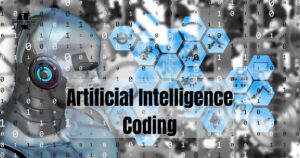Artificial Intelligence (AI) models have transformed how we interact with technology, making our lives easier and more efficient. Understanding how these models work, their evolution and their impact on various fields can provide valuable insights into the future of technology. In this post, we’ll explore the fundamentals of AI models, their training processes, historical context, types, and some of the best examples, including a look at ChatGPT.
What is an AI Model?
An AI model is a mathematical representation of a process that allows computers to perform tasks that typically require human intelligence. These tasks can include understanding language, recognizing images, making decisions, and predicting outcomes. At its core, an AI model processes data to identify patterns and make predictions or classifications based on that data.
AI models operate on various types of data, such as text, images, audio, and numerical values. They can be broadly categorized based on their complexity, the type of learning they employ, and their specific applications.
Key Components of AI Models
- Data: The foundation of any AI model is data. Quality, quantity, and variety matter significantly.
- Algorithms: These are the rules and calculations that the model uses to process data and make predictions.
- Training: This is the process of feeding data into the model so it can learn and improve its accuracy over time.
- Evaluation: After training, the model is tested with new data to assess its performance and generalization capabilities.
The Basic Idea of AI Models

At a fundamental level, the idea behind AI models is to mimic human cognitive functions. By using algorithms to analyze vast amounts of data, AI models can uncover patterns and insights that would be nearly impossible for a human to detect manually.
How AI Models Work
- Input: The model receives data, which could be anything from text to images.
- Processing: The algorithms analyze the input data. Here, the model applies learned parameters to make sense of the data.
- Output: After processing, the model produces a prediction, classification, or decision based on the input.
For example, in a facial recognition AI model:
- The input is an image of a face.
- The processing involves algorithms that identify unique facial features.
- The output is a label identifying the person or a decision about whether the face matches a known individual.
Training AI Models
Training an AI model is a critical step in its development. It involves feeding the model a large dataset so that it can learn from it. The process can be broken down into several stages:
Data Collection
Gathering a diverse and representative dataset is essential for effective training. This dataset should cover all possible scenarios the model might encounter in real-world applications.
Do you want to know about Stanford University - Read More
Data Preprocessing
Before training, the data often undergoes preprocessing. This includes cleaning the data, handling missing values, and normalizing or standardizing the data to ensure consistency.
Model Selection
Choosing the right type of model for the task at hand is crucial. For instance, you might choose a convolutional neural network (CNN) for image recognition tasks or a recurrent neural network (RNN) for sequence data like text.
Training the Model
During training, the model learns by adjusting its internal parameters to minimize the error in its predictions. This typically involves:
- Forward Pass: The model makes predictions based on the input data.
- Loss Calculation: The difference between the predicted output and the actual output is calculated using a loss function.
- Backpropagation: The model updates its parameters to reduce the error.
Evaluation
After training, the model is evaluated using a separate validation dataset. This step helps to ensure that the model generalizes well and doesn’t just memorize the training data.
Common Training Techniques
- Supervised Learning: The model learns from labeled data, where the correct output is provided for each input.
- Unsupervised Learning: The model works with unlabeled data, trying to identify patterns and relationships on its own.
- Reinforcement Learning: The model learns through trial and error, receiving feedback based on its actions.
Who Created the First AI Model?
The roots of AI models trace back to the mid-20th century. The term “artificial intelligence” was coined in 1956 at a conference at Dartmouth College, where pioneers like John McCarthy, Marvin Minsky, Nathaniel Rochester, and Claude Shannon laid the groundwork for future developments.
Early Developments
- Alan Turing: Often regarded as the father of computer science, Turing proposed the Turing Test, which evaluates a machine’s ability to exhibit intelligent behavior.
- Perceptron: In 1958, Frank Rosenblatt introduced the Perceptron, an early neural network model capable of binary classification tasks.
- Logic Theorist: Developed by Allen Newell and Herbert A. Simon in 1955, this program could mimic human problem-solving skills.
These early models paved the way for more complex systems and laid the foundation for contemporary AI.
What Are the Different Types of AI Models?

AI models can be categorized into several types, each suited for different tasks and applications. Here’s a breakdown of some common types:
Linear Regression Models
These are used for predicting a continuous outcome based on one or more predictor variables. They assume a linear relationship between input and output.
Do you want to know about AI Memes - Read More
Decision Trees
This model uses a tree-like structure to make decisions. Each branch represents a choice and leads to an outcome, making it easy to interpret.
Support Vector Machines (SVM)
SVMs are used for classification tasks. They work by finding the hyperplane that best separates different classes in the data.
Neural Networks
These models are inspired by the human brain and consist of layers of interconnected nodes. They excel in tasks like image and speech recognition.
Ensemble Models
These combine multiple models to improve performance. Techniques like bagging and boosting fall under this category, helping to reduce errors.
Reinforcement Learning Models
In these models, an agent learns to make decisions by taking actions in an environment to maximize some notion of cumulative reward.
| Type of AI Model | Description | Common Use Cases |
| Linear Regression | Predicts continuous outcomes | Sales forecasting |
| Decision Trees | Tree-based decision-making | Customer segmentation |
| Support Vector Machines | Classification tasks | Text categorization |
| Neural Networks | Complex pattern recognition | Image and speech recognition |
| Ensemble Models | Combines multiple models | Fraud detection |
| Reinforcement Learning | Learns through rewards and penalties | Game playing, robotics |
What are the Best AI Models?
Identifying the “best” AI models can be subjective, depending on the specific task and the quality of implementation. However, several models stand out due to their effectiveness and widespread use:
BERT (Bidirectional Encoder Representations from Transformers)
Developed by Google, BERT has revolutionized natural language processing (NLP) by understanding the context of words concerning others in a sentence. It excels in tasks like question answering and sentiment analysis.
GPT-3 (Generative Pre-trained Transformer 3)
This model by OpenAI is known for its ability to generate human-like text based on prompts. With 175 billion parameters, it can perform a variety of tasks, from writing essays to creating poetry.
ResNet (Residual Networks)
ResNet has set new benchmarks in image classification tasks. It uses deep residual learning to allow networks to be significantly deeper without encountering the vanishing gradient problem.
YOLO (You Only Look Once)
YOLO is a real-time object detection system. It processes images at high speed while maintaining accuracy, making it ideal for applications like surveillance and self-driving cars.
AlphaGo
Developed by DeepMind, AlphaGo made history by defeating a world-champion Go player. It combines deep learning and reinforcement learning to master complex games.
Is ChatGPT an AI Model?

Yes, ChatGPT is indeed an AI model, specifically designed for natural language understanding and generation. Built on OpenAI’s GPT architecture, ChatGPT can generate human-like text based on the input it receives.
Key Features of ChatGPT
- Conversational Ability: ChatGPT excels in maintaining context and responding coherently in dialogue.
- Versatility: It can assist with a wide range of tasks, from answering questions to providing writing prompts.
- Continuous Learning: Although the model itself is static post-training, it benefits from iterative improvements based on user feedback and advances in research.
Applications of ChatGPT
- Customer Support: Many businesses use ChatGPT to automate responses to common queries.
- Content Creation: Writers and marketers leverage it for brainstorming ideas and drafting articles.
- Education: ChatGPT can serve as a tutor, explaining complex topics in simple terms.
In summary, AI models like ChatGPT represent the forefront of technology, continuously evolving to meet the needs of users across various domains.
Final Thoughts
The journey through the evolution of AI models reveals a fascinating landscape of innovation and potential. From their inception in the mid-20th century to the sophisticated systems we see today, AI models have significantly impacted various industries and everyday life. Understanding these models—what they are, how they work, and their diverse applications—provides essential insights into the future of technology.
As we’ve discussed, AI models are not just complex algorithms but are powerful tools that mimic human intelligence, capable of learning from vast amounts of data. Their training processes and types, ranging from simple linear regression to advanced neural networks, showcase the versatility and adaptability of AI. Models like BERT, GPT-3, and YOLO exemplify the cutting-edge advancements driving the field forward.
Moreover, the rise of conversational AI, as demonstrated by ChatGPT, illustrates how these models can enhance communication and automate tasks, making technology more accessible and efficient. The possibilities seem endless as we continue to refine these models and integrate them into various facets of life.









